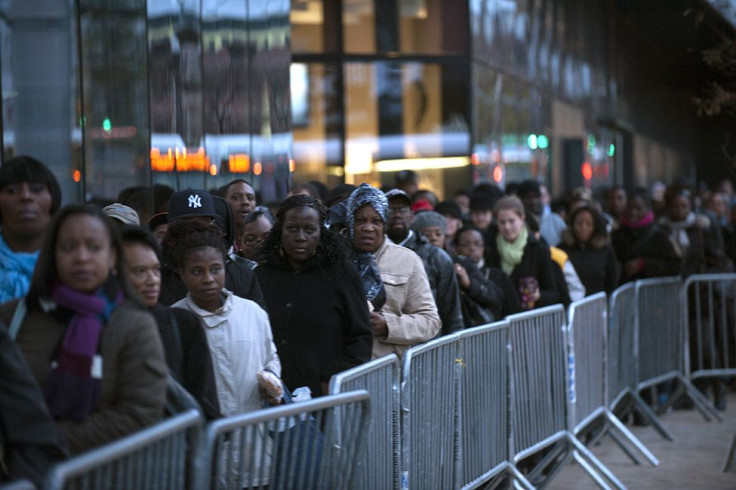Superstorm Sandy: Monday Commuters Face Better (But Still Limited) Service
Most NYC schools open, but only half of Jersey districts prepared to receive students.

Commuters in New York City began their work week with a better public transportation situation since Superstorm Sandy dealt a knockout blow to the tristate area’s infrastructure, but the commuter network will not be fully operational -- and some portions of the subway network will take weeks to repair.
While key subway lines were back in service, connecting Manhattan workplaces to their employees in the outer boroughs, commuters trying to get to and from work, students seeking a return to their normal routines or anyone out in the tristate area is likely to see travel hassles for days -- and, for some, weeks -- to come.
Problems with the subway system could arise as repair operations continue. For example, an electrical problem over the weekend shut down one station in Manhattan’s Greenwich Village, according to the New York Daily News.
“All service is operating with very limited capacity, and some routes may be truncated or operate differently due to ongoing work to restore full service,” the Metropolitan Transportation Authority said in a statement.
The L and G lines connecting Brooklyn and Queens were still out of service with no indication of when they would be back on line. It could take months to repair segments of the A train serving the flood-wrecked Rockaway Peninsula.
The MTA Long Island Railroad was operating on a modified schedule, while the Metro-North line was back to normal. All bridges were opened for the start of the week, with tolls being waved on bridges connecting Rockaway.
In an indication of just how long the city’s transportation network could be reeling in some of the most damaged parts of the metro area, the MTA is also sending subway cars on flatbed trucks to establish a temporary 20-car subway shuttle for Rockaway, according to the Associated Press.
The Jersey Transit Authority said it would have more buses and trains in service for the start of the week, but “customers are also advised to allow additional travel time due to overcrowding and congestion.”
The weekend saw miles-long lines of cars at any gas station that even hinted that it might be receiving a supply tanker anytime soon. New York Harbor has been open for receiving fuel since Thursday, but the supply chain struggles with gas depots that are either still without power or have only recently had power restored. Even as the lights come back to gas stations, it will take days for the supply chain to return to normal. As of Monday morning, the odd-even license plate number fuel rations system was still in effect. Today, cars in New Jersey whose plates end with an odd number will be allowed to refuel wherever gas is available. Vanity plates count as odd-numbered plates.
Still In The Dark
Public Service Electric and Gas Company, or PSE&G, New Jersey’s largest utility and a subsidiary of Public Service Enterprise Group Inc. (NYSE:PEG), said Monday morning that 375,000 of its customers (businesses and residences) remain without power entering the work week, down from the peak of 1.7 million. Eighty percent of schools and 78 percent of gas stations were back online, it added. About 50,000 of these properties reside within the New York City metropolitan area, in Hoboken, Jersey City and Bayonne, just across the Hudson River from lower Manhattan.
Consolidated Edison, Inc. (NYSE:ED), the utility serving New York City and nearby counties, reported that as of Monday morning, 153,899 customers were still without power from 10,905 outages. That’s down from more than 800,000 customers that were knocked off the grid last week.
Back To School
New York City education officials planned to have 90 percent of the city’s schools open for class Monday, including 36 that might not have heat, according to NY1. Temperatures are dropping, and snow is in the forecast for parts of the Northeast by mid-week.
About half of Jersey school districts are reportedly reopening on Monday with many schools still without power, being repaired or undergoing inspections to ensure they’re safe.
"We still have schools without power, and we are concerned about staff and students' ability to get to school safely," Schools Superintendent Marcia V. Lyles told the Jersey Journal.
© Copyright IBTimes 2024. All rights reserved.












